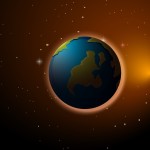The video discusses the phenomenon of freshwater meeting seawater at the boundary of the Fraser River and the Strait of Georgia in Vancouver. It explains that although it may seem like the freshwater is pushing back the saltwater and creating a clear boundary, the two waters are actually mixing together. The boundary is a mixing zone where suspended sediments from the river water combine with salt ions from the seawater and sink to the bottom, making the water appear clear. This is not a religious miracle, but rather a scientific process where freshwater and saltwater, despite their different properties, do mix, even if it is not visible on the surface.
The video explains the phenomenon of freshwater meeting seawater at the boundary of the Fraser River and the Strait of Georgia in Vancouver, Canada. While it may appear that the freshwater is pushing back the saltwater and creating a distinct boundary, the two waters are actually mixing. The boundary is actually a mixing zone where suspended sediments from the river water, such as silt and clay, bind with salt ions from the seawater and sink to the bottom, making the water appear clear. Although some may interpret this event as a religious miracle, it is simply a result of scientific processes. While freshwater and saltwater have different properties, they do mix, although it may not be visible on the surface.








